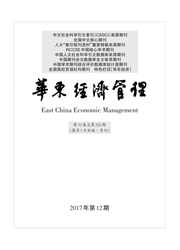

 中文摘要:
中文摘要:
文章通过建立民办养老机构与政府的博弈模型,探讨政府补贴与民办养老机构定价的关系,以及单县级服务与多层级服务选择问题.分析相关因素变化对政府与民办养老机构所带来的影响:结果表明,民办养老机构选择多层级模式时,应适当拉开服务水平层级差距;养老需求水平较高时,多层级模式优于单层级模式,养老需求水平较低时,单层级模式优于多层级模式;老年人的机构养老服务偏好越大,选择多层级模式对政府及民办养老机构越有利;高服务成本的养老机构宜选择单层级模式,低服务成本的养老机构宜选择多层级模式。
 英文摘要:
英文摘要:
The paper constructs a game model between government and private pension institutions, to explore the relationship between pricing of private pension institutions and government's subsidy, the selection of the single-class service mode or the muhi-class service model, then to analyze the influences of the related factors to government and private pension institutinns. The results show that: the priwte pension institutions should expand the gap of service level appropriately when the multi-class service mode is selected, the multi-class pension service mode is better than the single-class pension service mode when the pension demand level is higher, the single-class pension service mode is better than the multi-class pension service mode when the pension demand level is lower, the government and private pension institutions perform better with the muhi-class pension service mode when service preference of senior people increases, the pension service institutions with higher cost shouht choose single-class pension service mode, while the pension service institutions with lower cost should selec! muhi-class pension service mode.
 同期刊论文项目
同期刊论文项目
 同项目期刊论文
同项目期刊论文
 期刊信息
期刊信息
